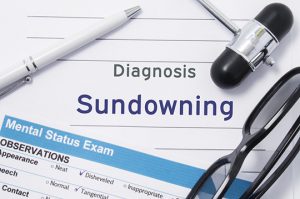The Next Generation NCLEX (NCLEX-NGN) introduces two new types of test items to evaluate your ability to use the NCSBN Clinical Judgment Measurement Model (NCJMM) when providing safe care for clients.
NCJMM measures six essential clinical skills that follow the Nursing Process:
- Recognize cues: Client findings from assessments, history, medical records, and other sources that provide information for the nurse to make preliminary decisions.
- Analyze cues: The nurse examines the cues to determine what they can mean. Analysis requires knowledge of medical conditions, pathophysiology, and signs/symptoms.
- Prioritize hypotheses: After considering the data and cues, the nurse evaluates what the client most likely needs and what is necessary for a safe recovery.
- Generate solutions: Now the nurse thinks about all possible ways to address and resolve the client’s needs or problems. The nurse lists expected or desired outcomes first.
- Take action: Interventions that will result in positive outcomes are included. The nurse must also act to intervene when complications develop.
- Evaluate outcomes: Now the nurse determines if the interventions were successful or what else needs to be done for a positive outcome.
Two new additions to the Next Generation-NCLEX
NCLEX-NGN is designed to specifically include two ways to evaluate your ability to deal with the ever-changing progress (or setbacks) in client care. There is much more involved than recalling facts or ‘perfect scenarios’ from your nursing education and clinical rotations.
While the traditional multiple-choice and select-all-that-apply (SATA) test items continue to make up most of the NCLEX, you can expect to find 3 Ongoing Case Studies, with six questions each, and 6-7 stand-alone questions that will be NCJMM-focused.
We told you about the 6-part Ongoing Case Studies here. The new types of test items that are part of the case studies are described here. Now let’s look at the stand-alone test items.
Stand-alone test items: Like mini-case studies
Stand-alone test items target one or more of the 6 clinical skills. There is a short scenario that may include tabs with data, such as nurse’s notes, vital signs, lab results, medical-social history, medications, etc. Although they include steps from the NCJMM, they differ from the Ongoing Case Studies:
Stand-alone | Case Study |
Single test item | Group of 6 progressive test items |
Has a stated diagnosis or an implied diagnosis | Diagnosis not known at the outset |
Contains clinical information for a specific client | Contains clinical information for 1 or more clients |
Has components that require an entry-level nurse to make 1+ clinical decisions | Entry-level nurse must make multiple clinical decisions throughout the case study |
There are 2 types of stand-alone test items: Bow-tie and Trend
Bow-Tie Test Items
Bow-tie items cover all 6 steps in the NCJMM at one point in time. Bow-tie items use drop-and-drag type of test items. You will read the scenario and available data, then decide:
- which findings are relevant, normal or abnormal (Recognize cues);
- understand possible medical conditions or complications (Analyze cues)
- identify the client’s immediate needs and/or problems (Prioritize hypotheses)
- determine possible solutions to take (Generate solutions)
- implement appropriate interventions (Take actions)
- monitor interventions for effectiveness (Evaluate outcomes)
Here’s what a Bow-tie test item looks like:
Action to Take | Parameter to Monitor | |
Condition Most Likely Experiencing | ||
Action to Take | Parameter to Monitor | |
|
|
|
Action to Take | Potential Condition | Parameter to Monitor |
Option 1 Option 2 Option 3 Option 4 Option 5 | Option 1 Option 2 Option 3 Option 4 | Option 1 Option 2 Option 3 Option 4 Option 5 |
NCSBN explains how the Bow-tie format works:
For the entry-level nurse to complete the bow-tie item and move forward with the exam, all targets (placeholders for response options) must be filled with a token (the response option), which are found directly below the bow-tie in labeled columns. Tokens from the same column are interchangeable, but a token from ‘Actions to Take’ cannot be used to fill a ‘Parameter to Monitor’ target and vice versa. The target boxes and the option tokens also have similar wording and the same coloring to help facilitate appropriate responses.
For instance, notice the four tokens colored in blue under the heading ‘Potential Conditions’ in the sample bow-tie item on the next page. These align with the target area just above it that is similarly colored and has similar text indicating ‘Condition Most Likely Experiencing.’ This was done to help guide the correct placement of option tokens to the correct target area. Once a token has been placed on a target, it can be removed by moving it from the target back to its designated token column, or moving a new token to the target and placing the new token on top of the original token. The original token will then move back to the appropriate column.
Tips to answer a Bow-tie item on your NCLEX-NGN
- ALWAYS read the entire test item carefully. Make sure you understand what the question is about.
- Answer the middle well (Potential Condition) FIRST. This is the main question and will help you answer the Actions and Parameters columns more accurately. Identify the relevant information and apply it to the client’s condition. Now you can review the options and select the BEST choice. Drag it to the matching color target.
- Now you can look at the nursing actions that will BEST manage and support the client. Select two and drag them to the matching color targets.
- Finally, determine the parameters that will indicate if the actions effectively monitor those nursing actions. Select two and drag them to the matching color targets.
- ALWAYS check your answers before moving to the next test item!
Trend Test Items
Trend items present a client scenario with information gathered over time. The time period can range from minutes to hours, days, or longer. The nurse must review the information and determine if the client’s condition is changing. Unlike Bow-tie items, which include all 6 steps in order, Trend items address multiple steps, but they don’t follow the exact order.
Like Bow-tie items, tabs can include nurse’s notes, vital signs, lab results, medications, medical-social history, etc. The types of questions can be any that are found in Ongoing Case Studies.
- Cloze (Drop-down)
- Matrix Multiple Choice
- Extended Multiple Response
- Matrix Multiple Response
- Extended Drop-and-Drag
- Highlight
Although Trend items may seem simpler, they evaluate your ability to review a client’s condition, starting at any point during their treatment. You must determine if the client is improving, declining, or if there is no change, based on the data over time.
Since trend items don’t follow the NCJMM 6-step order, you may get a question that covers Recognize Cues and then skips to Take Action. Or Generate Solutions, then Evaluate Outcomes. In order to answer correctly, you must know all the steps and be able to follow them, even if they aren’t part of that particular test item. You will also need knowledge and understanding of the client’s medical condition, including signs/symptoms, possible treatment, medications, complications, and expected outcomes.
Passing NCLEX-NGN means you’re ready to provide excellent client care
The new NCLEX is designed to provide clinical scenarios you may encounter as a new nurse. Although it’s essential to have a solid foundation in all aspects of nursing, you will be making clinical decisions from your first day on the job.
Nursing is complex and your analytical skills should be ready to look at each client and make judgments that protect them during all phases of their treatment. The purpose of NCLEX is to ensure public safety. When you pass your examination, you are a member of the new elite group of licensed nurses who proved they are proficient in critical thinking.
 By
By 



